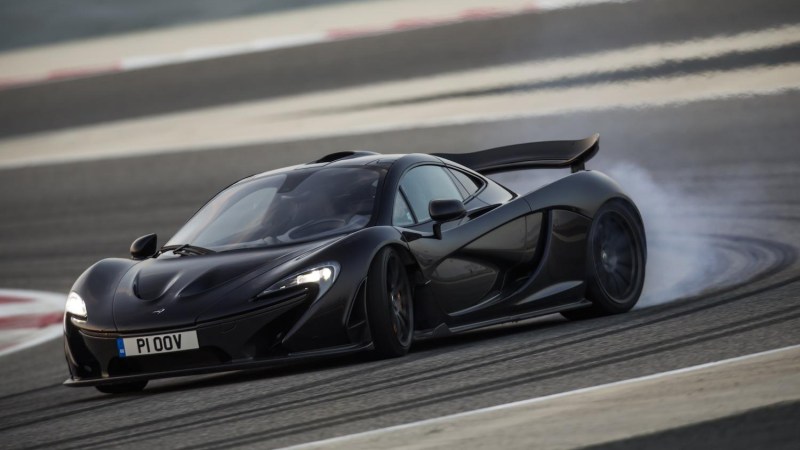McLaren is starting to pull back the curtain on its next Ultimate Series model, which will step beyond the P1’s performance and take inspiration from the F1 road car.
Autocar has gone in depth with McLaren’s boss, Mike Flewitt, and uncovered details about the “Hyper-GT” that have only been shared with McLaren customers to this point. Most notably, the car is due sometime in 2019, will carry a price tag above $2 million, and will introduce new hybrid technology that will foreshadow all future McLaren road cars. Yes, this product is a big deal.
Codenamed the BP23, McLaren’s new halo model will reportedly utilize a three-passenger cockpit like the F1: driver in the middle, two passengers behind him/her on either side. Powering the car will be the combination of McLaren’s new 4.0-liter twin-turbocharged V8 (that debuted in the 720S) and an electric powertrain. The BP23’s output will exceed the P1’s 903 horsepower and a larger battery pack will extend all-electric range.
“With the P1, hybridization added about 140kg,” said Flewitt. “To be weight neutral, we’ve got to take out about 140kg. That’s pretty hard, but if we can get close, we can have both the weight benefit and the performance benefit.”

Unlike the P1, McLaren’s next hypercar won’t just be designed for maximum track performance. It will be an “incredible road car,” noted Flewitt. Customers will be able to travel long distances in the BP23 in comfort, much like the Bugatti Veyron and Chiron. The fact that the BP23 will accommodate three adults speaks to its GT qualities. That seating setup won’t be easy, though. “It can be difficult to get into the central seat in a three-seater, but this (the BP23) is more accessible than the F1,” remarked Flewitt.
At this time, all 106 planned units of the new car have been spoken for via customer applications. McLaren says it chose the new car’s buyers based on their loyalty to the brand and how often they drive their current McLaren products (as opposed to buying them as investments). That means even customers of Sport Series models like the 570S were in the mix, assuming they regularly drive and enjoy their vehicles.


